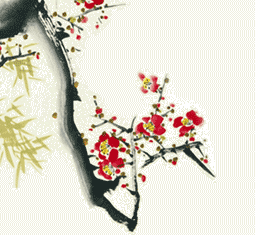Meditation - Timeline

-
Three August Ones and Five Emperors
(2852 BC to 2205 BC)
Chinese Mythology
-
Three August Ones:
-
The Heavenly Sovereign (Fuxi)
who ruled for 18,000 years
aka Chinese Emporer Fu Hsi
(2953 BC - 2838 BC)
Founder of 8 trigrams of "I Ching"
-
The Earthly Sovereign (Nuwa)
who ruled for 11,000 years
-
The Human Sovereign (Shennong)
who ruled for 45,600 years
-
Five Emperors:
-
The Yellow Emperor or Huang Di
(2698 BC to 2599 BC)
-
Zhuanxu
(2491 BC - 2413 BC)
-
Emperor Ku
(2413 BC - 2343 BC)
-
Emperor Yao
(2333 BC - 2234 BC)
-
Emperor Shun
(2233 BC - 2184 BC)
-
Xia or Hsia Dynasty
(2183 BC - 1523 BC)
-
Yu the Great (Da Yu)
(2183 BC - 2138 BC)
Founder of the Xia Dynasty
Founder of 64 hexagrams of "I Ching"
First use of written symbols
-
Shang Dynasty or Yin Dynasty
(1523 BC - 1027 BC)
Fist historic dynasty
Well developed writing.
First Chinese calendar.
-
Zhou or Chou Dynasty
(1027 BC - 256 BC)
Classical age
Written laws
-
Laozi or Lao Tzu
(550 BC?)
Wrote "Tao Te Ching" between 600 BC and 200 BC
Founder of Taoism
-
Confucius
(551 BC - 479 BC)?
Author, editor, or compiler of Wu Ching (Five Classics)
-
Siddhartha Gautama BUDDHA
(563 BC to 483 BC)
-
Chung Tzu
-
Warring States Period
(403 BC - 221 BC)
-
Qin or Ch'in Dynasty
(221 BC - 206 BC)
Unification on harsh rule of Shih Huang Ti
Written language standardized
Much of Great Wall built
-
Han Dynasty
(202 BC - 220 AD)
Further unification, less harsh
Confucianism made basis for bureaucracy
Buddhism introduced
Encyclopedia and dictionary compiled
-
Three Kingdoms Period
(220 AD - 265 AD)
Division into three states (Wei, Shu and Wu)
Taoism and Buddhism prominent
Scientific advances from India
-
Tsin or Chin Dynasty
(265 AD - 420 AD)
Founded by Wei general
Expanded southeast
Series of barbarian dynasties ruled north China
Buddhism growth
-
Six Dynasties
(316 AD - 589 AD)
-
Sui Dynasty
(581 AD - 618 AD)
Reunification, centralized government
Buddhism and Taoism favored
Great Wall fortified
-
Tang Dynasty
(618 AD - 907 AD)
Territorial expansion
Buddhism suppressed
Confucianism basis for Civil Service exams
Great achievements in poetry, sculpture, and painting
-
Five Dynasties and Ten Kingdoms
(907 AD - 960 AD)
Period of warfare, corruption, hardship
Money first printed
-
Song or Sung Dynasty
(960 AD - 1279 AD)
Neo-Confucianism attains supremacy
over Taoism and Buddhism
Central bureaucracy reestablished
Cultivation of tea and cotton
Gunpowder first used by military
-
Yuan Dynasty
(1271 AD - 1368 AD)
Mongol Dynasty founded by Kublai Khan
Growing contact with West
Confucian ideals discouraged
Great age of Chinese playwriting
-
Ming Dynasty
(1368 AD - 1644 AD)
Mongols expelled
Confucianism reinstated
Contact with European traders and missionaries
Porcelain architecture, novels, and drama flourish
-
Qing or Ch'ing or Manchu Dynasty
(1644 AD - 1912 AD)
Established by the Manchus
Decline of central authority
Foreign powers divide China
Opium War
Hong Kong ceded
Boxer Uprising
Last Chinese monarchy
-
Nationalist Period
(1912 AD - 1949 AD)
-
People's Republic of China
(1949 AD - present)
|
|



 Friday, October 31
Friday, October 31  Site Intro
Site Intro Guest Book
Guest Book Contact Us
Contact Us Mailing List
Mailing List Seminars
Seminars Products
Products School Location
School Location Testimonials
Testimonials Class Schedule
Class Schedule Coupons
Coupons Articles
Articles Forum
Forum Photo Gallery
Photo Gallery News
News Event Calendar
Event Calendar FAQ
FAQ


